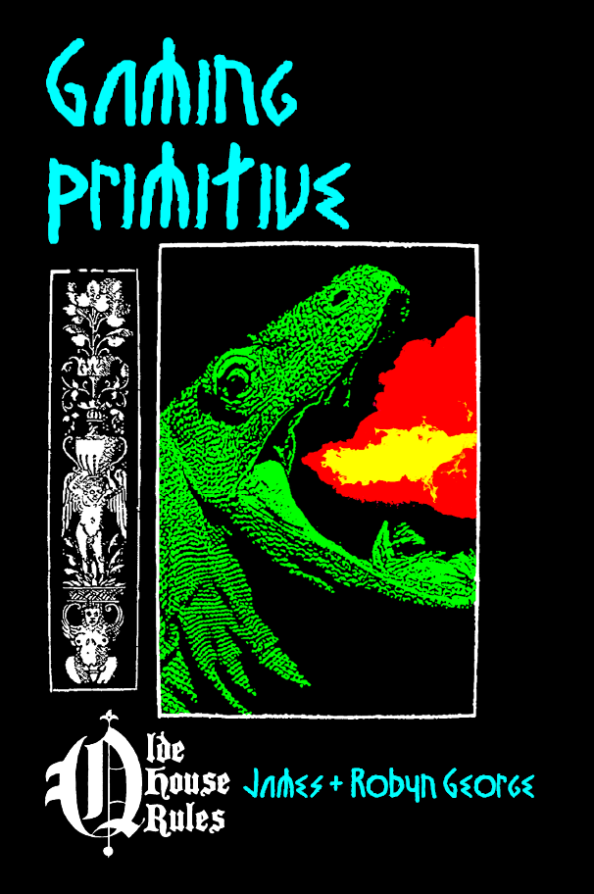Gaming Primitive RPG - Planning a Solo Game with a Non-Solo RPG (3)
I like the idea of a concrete adventure map with details for solo play, and the use of a map is more in keeping with the style of play suggested in Gaming Primitive.
For the Escape from Dlantes scenario, all modes of play whether using the pariah human Mux who was raised by the Snow Warriors, a condemned Snow Warrior, or a human(s) captured by the snow warriors, will be played with a cave map mostly made prior to gaming.
Gaming Primitive also suggests using a battle map with adventurers and foes placed on it to add strategic elements to deepen the game play experience during encounters. The use of a battle map need not be anything elaborate. In fact, roughly sketched for each battle, this would work quite well. I have already enlarged a grid paper onto two A3 sheets of paper with squares of roughly 1 inch in size to represent 5 feet squares according Gaming Primitive rules. These I inserted into clear plastic sleeves that can be used with white board erasable markers. So, no investment is needed for laminating either and you would still have a nice looking homemade battle map. If you are someone without any metal figurines, meeples, or can't be bothered printing out paper miniatures, coins would work well.
For both the adventure map and the battle map, and in all modes of play, encounters, traps, various items, and treasure would be generated procedurally during game play. In the last post, I mentioned that Grot, a sympathetic Snow Warrior shaman, would free the captives and give them a map. The map would give a general idea of the caves, and be a hint for the overall risks as characters adventure, but these would not be enough to tell the exact details. The location and things in an area, along with the placement of the foes, etc., would need to be randomized and placed on an adventure map or battle map only when the adventurers encounter them.
To make this a little more interesting than simply an escape scenario, I thought it might be interesting to in some way force the adventurer(s) to run a dangerous errand for Grot in some part of the cave system. For example, adventurers must retrieve a rare mushroom from a forbidden area of the cave that is inhabited by bear spirits or the spirits of angry ancestors. It is possible that the adventurer(s) ingested a very slow working poison in their food while prisoners, and the mushroom or some other important ingredient is the only item that can be used to create an antidote that only Grot, the skilled Snow Warrior shaman can produce. These kinds of details along with randomized encounters and other room features, I'll get into more in another post, and use this post just to put a few ideas out there, and set up a way to get a basic map for your game play.
Here are some of the rooms or areas I thought might go well into an adventure map of Dlatanes:
- a large area for the chief's wives and families to live
- family dwellings for other warriors
- a place to store and make armaments and tools
- a place to make and store dried meats and harvested furs and hides
- a series of caverns devoted to cave paintings and rituals dedicated to the snow goddess (Hrawyy) and the burial and remembrance of ancestors
- places where prisoners are kept
- guest areas for visiting Snow Warriors from other parts
- a birthing and menstruation cavern for childbirth and early childcare and female seclusion during menstruation. A first childbirth represents a special event and the rite of passage for young women to become a Hrawyy Mother or literally a Snow Goddess Mother - a full Woman of the Snow Warrior clan.
- a shaman's residence and place to store, and grind various ingredients (plants, fruits, rocks, and certain dried insects) into ceremonial pigments, and herbs into paste for ceremonial purposes and medicine with mortar and pestles.
- a large meeting cavern for large group ritual or feasting or meetings - also used for training and mock battles to practice weapon use
- a warrior seclusion chamber where men are kept separate from women when they are on guard duty, on the night before a big hunt, or before or during a planned war. Young men are also secluded here to prepare for a rite of passage to become Hrawyy Warrior or literally a Snow Goddess Warrior - a full Man of the Snow Warrior clan.
- an underground pool
- a tunnel or stairs leading up
- a tunnel or stairs leading down
- winding tunnels / corridors
- cave entrance / exits
- bottomless pits / valleys within cave areas
- an area where mounts are fed, groomed, kept along with harnesses and saddles
- an area for garbage that can't be burned, and for people to do their business in small deep holes in the ground
- There might even be taboo / forbidden areas that no one has entered due to myth or superstition or monstrous occupants or unique features that are better left to their own devices.
- an empty area with niches for storage
- area(s) when Snow Warriors stand guard
- a treasure chamber
- Now at the end of the list I'm having second thought of including a chief's residence, wives, and family - as this area is probably too dangerous...


Comments
Post a Comment